Welcome back to the Timeless Ryokan series! I’m Roza Akino, and I live and work in Japan. Thanks for joining me on my journey to explore the lesser-known lodgings in Tokyo!
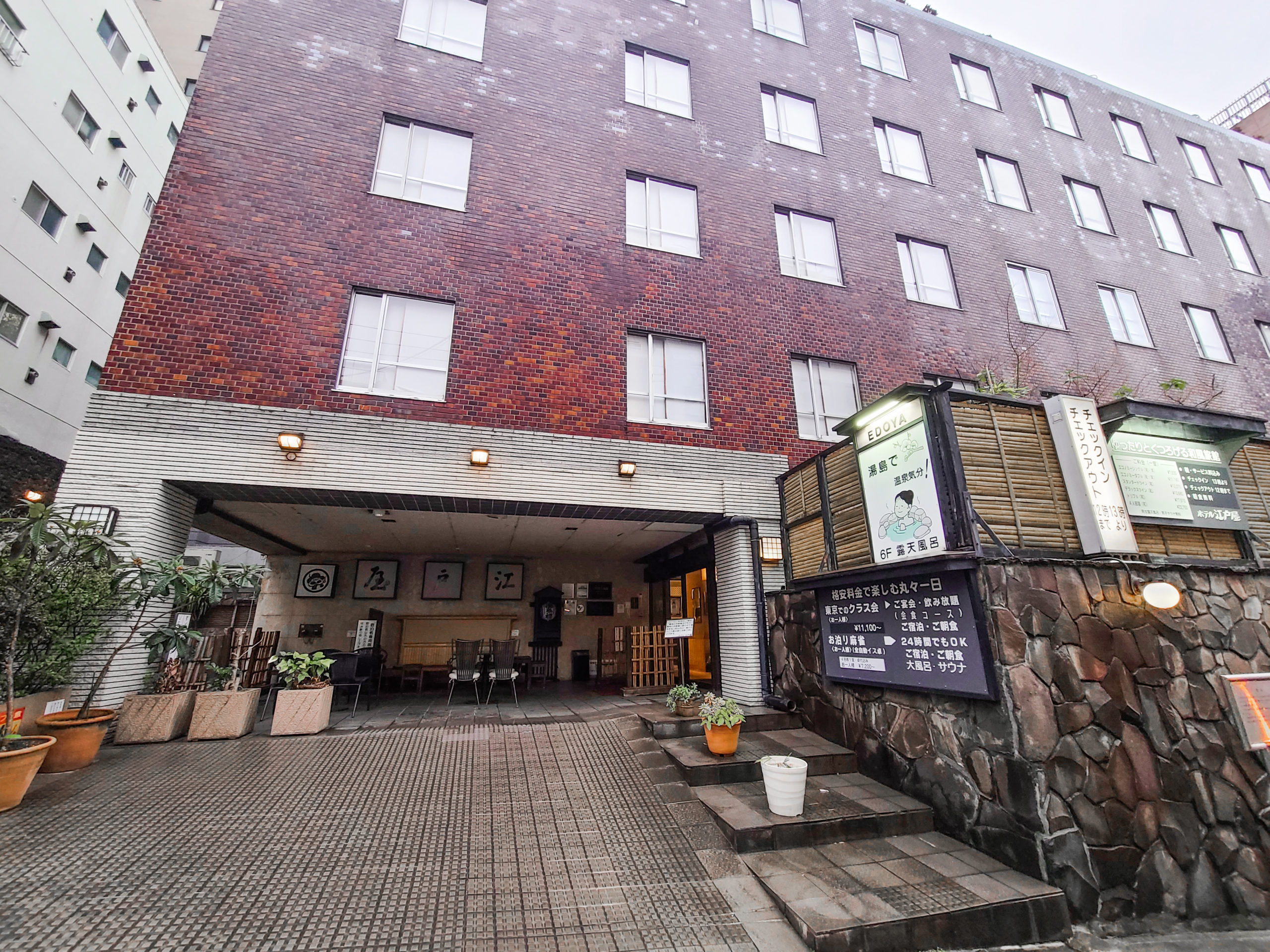
The hotel that I’m visiting today is about a 5-minute walk from Yushima Station on the Chiyoda line. On my way I notice several small shops: a sake brewery and a sushi restaurant among them. The Yushima neighborhood is a quiet one, famous for Yushima Tenmangu (also called Yushima Tenjin), an austere old shrine that dates back to the year 458.
The red brick building that is the hotel is located on a hill, and the trek up reminds me that I’m overdue for some exercise. I notice a small restaurant to one side of the building as I approach.
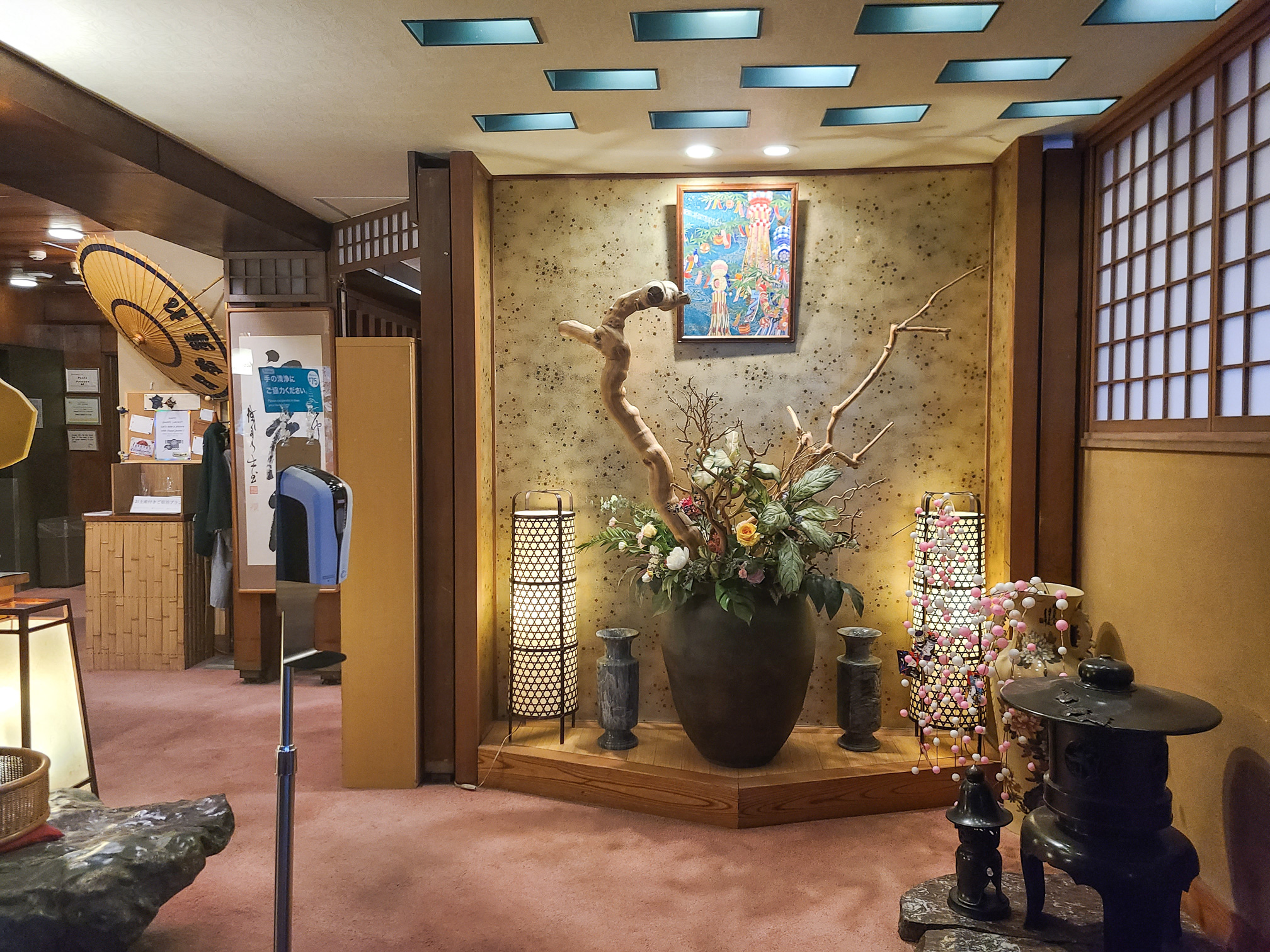
A massive vase with a flower arrangement greets me at the doorway of the lobby. Don’t let the name fool you, while the floor of Hotel Edoya is carpet and shoes are worn, the interior is indeed very Japanese.
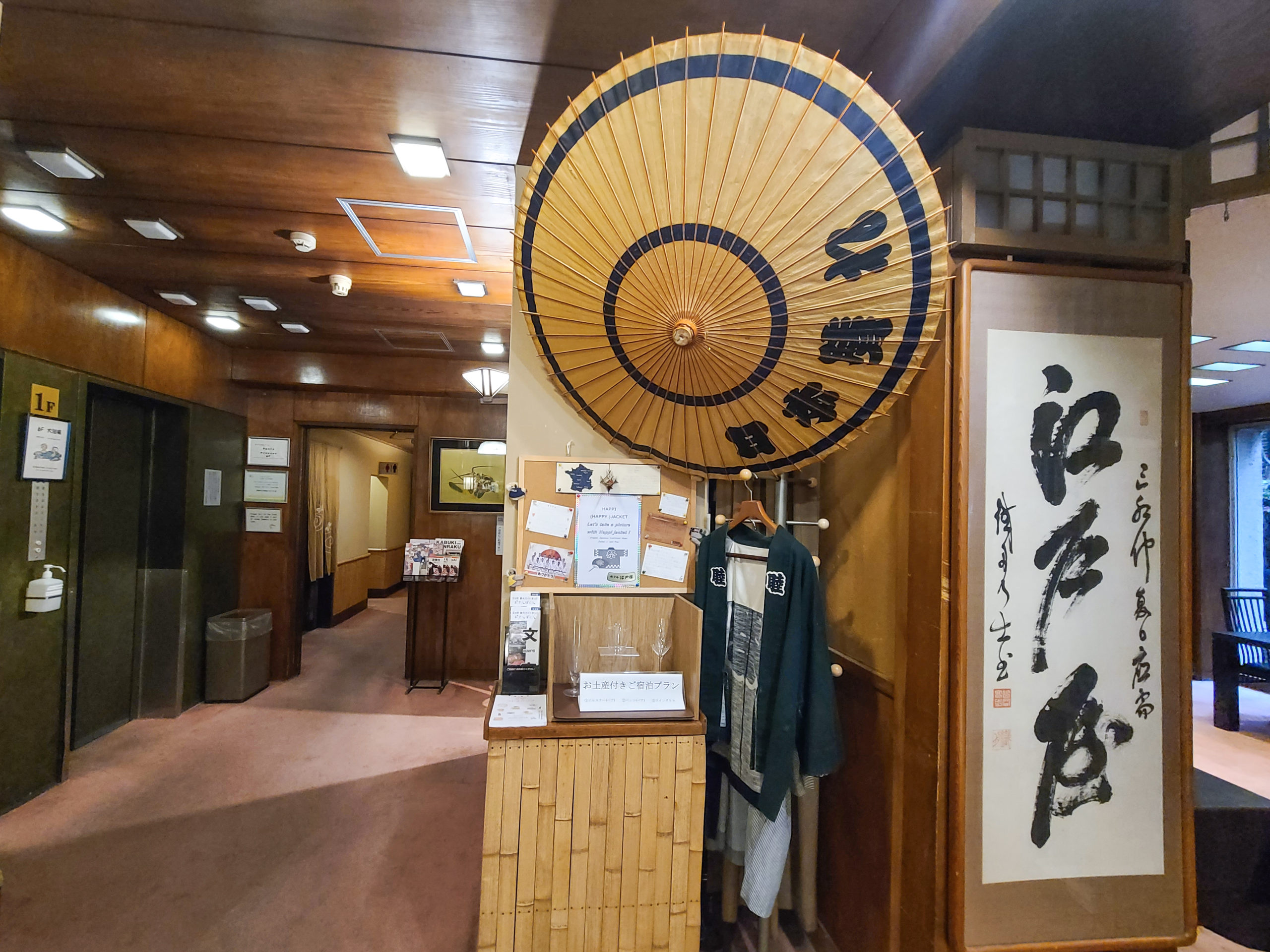
A traditional umbrella hangs from the ceiling and woven bamboo lanterns help light the subdued retro-style room.
CEO Yuta Tomura-san greets me at the front desk and we move into the room adjacent to the lobby, which is usually used as the breakfast dining area. Although we are in the middle of a city, the view is serene as the only thing that’s visible out the window is a small walled-in Japanese-style garden.
Hotel Edoya was started by Tomura-san’s grandfather, who used to run a lodging in Asakusa, in 1967. At the beginning it was a regular hotel that had mainly western-style rooms, but with the increase of hotels in the area about 20 years ago it went through a transformation. Hotel Edoya shifted its focus to the international audience, and now 45 out of the 49 rooms here are Japanese-style.
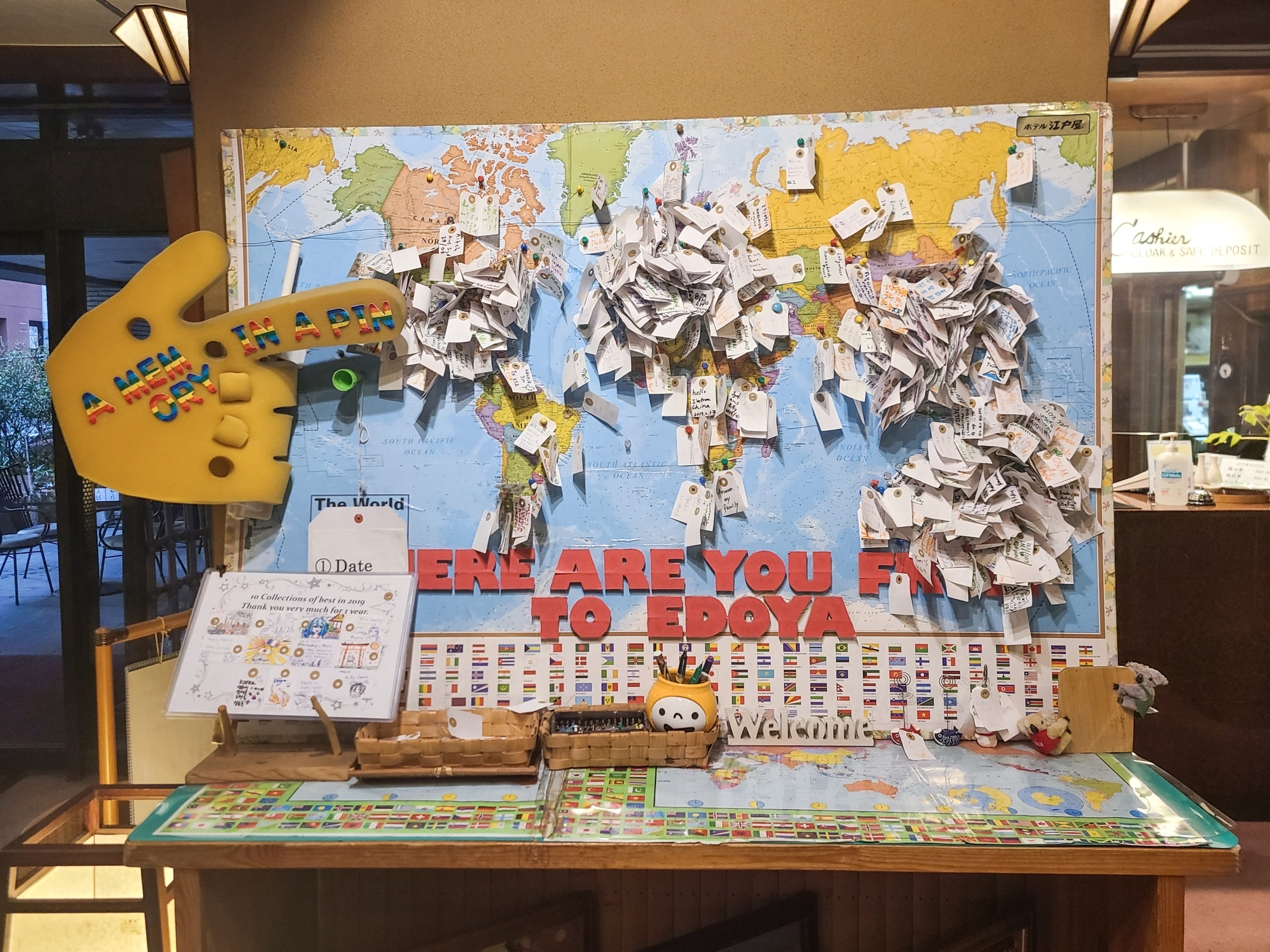
A “Where are you from?” map in the lobby
Before the pandemic, 70% of the hotel’s guests had come from abroad, and with English-speaking staff and a location within walking distance from Ueno Park, it was a popular place to stay.
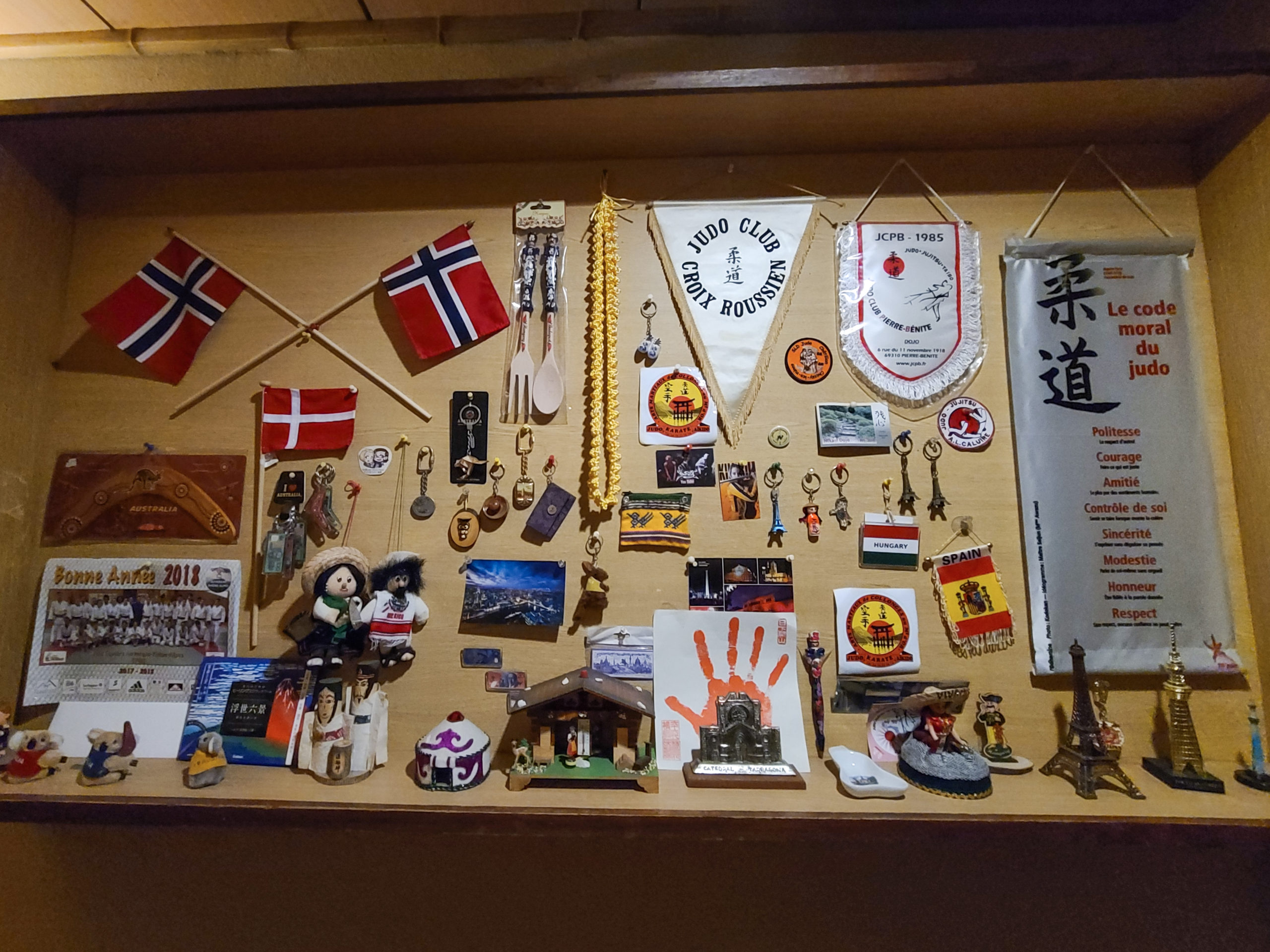
The many trinkets and souvenirs that Hotel Edoya has received from guests over the years
Although its name has the word “hotel” in it, this place is really a hybrid, its atmosphere leaning toward that of a ryokan. Since most of the rooms are tatami rooms, they can easily accommodate families with up to 3-4 people per room. Tatami rooms are also great for babies because there is no worry of falling off the bed, plenty of room to crawl, and shoes are not worn so the area is clean. Also, the rooms are more spacious than most business hotels and the area is quiet so it’s easy to concentrate. All of the rooms have free Wi-Fi access as well, making Hotel Edoya a great option for businesspersons working remotely.
The all of the rooms have their own private bath and toilet, some of which even feature traditional cedar bathtubs. When Tomura-san mentions that the hotel also has a daiyokujō, a public bath (with separate baths for men and women), I feel a sense of excitement because today I will be staying here, and I absolutely love bathing in public baths. If you’ve never gone to one, it might be good to familiarize yourself with public bath manners beforehand, but they are excellent for stretching out and relaxing at the end of the day.
Tomura-san continues to explain the history of the area. You wouldn’t know by looking at it now, but at one time this area was actually a hanamachi, an area that had geisha and geisha houses. He says during his childhood there were many ryōtei, traditional Japanese restaurants, and gatherings with geisha were commonplace. Now it’s much quieter and all those restaurants are gone, but the location still offers great access to all major areas with just one train ride, as well as easy access to Narita International Airport. Yushima Tenjin and Kanda Myōjin, another large and famous shrine in the area, are also popular visiting spots—especially during New Year’s celebrations.
“Is there anything else that’s special about your hotel?” I ask.
He thinks for a moment, “Well, we have a room back there that used to be a tearoom, but now it’s just a multipurpose room for our guests to use if they’d like.” My ears perk up at the word “tearoom” as points to a door that I hadn’t even noticed.
What? A secret room? Why didn’t you mention this earlier!
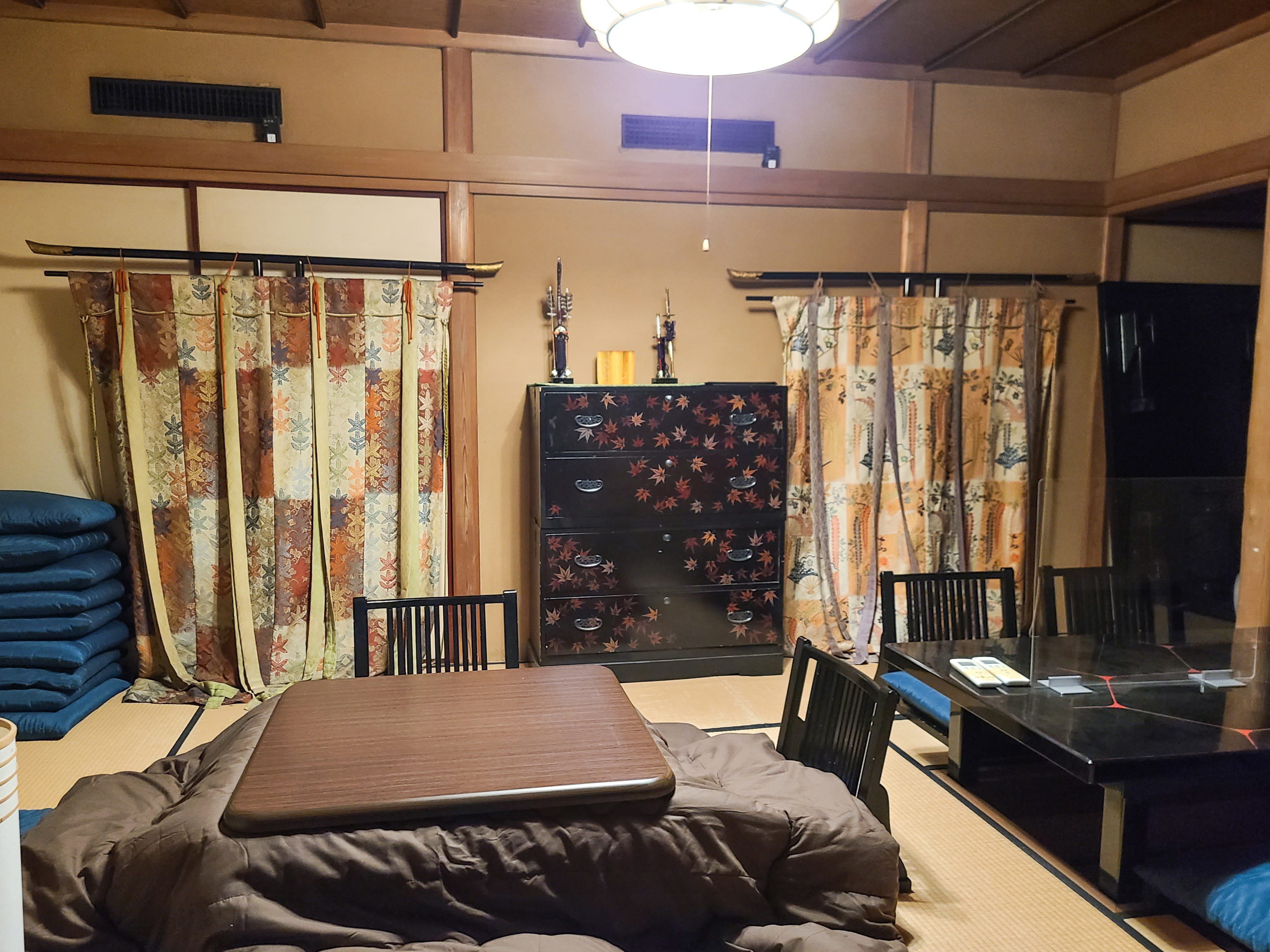
“The Hideout”
He unlocks the door and leads me to the room that I have already nicknamed in my head, “The Hideout.”
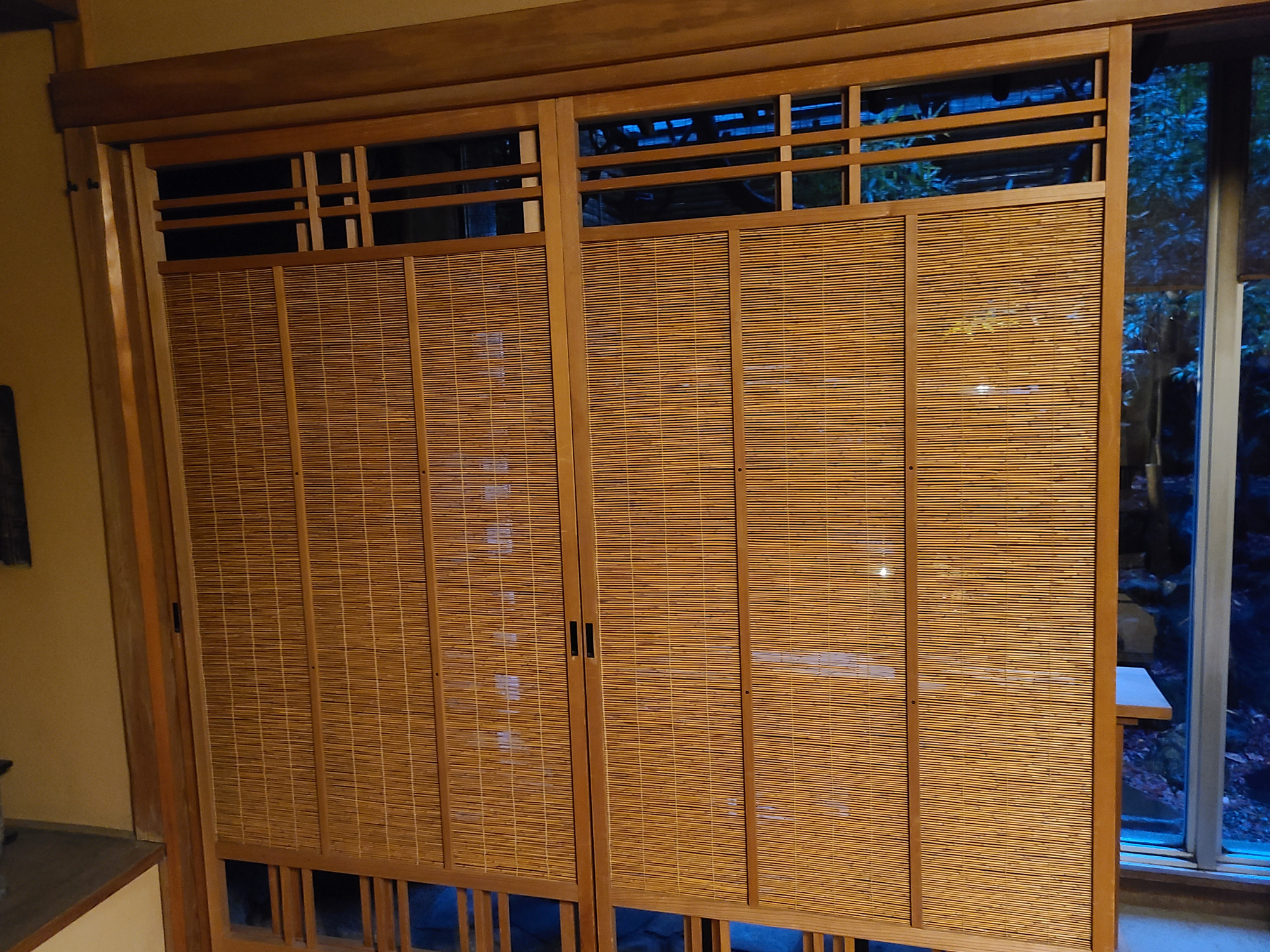
The beautiful traditional reed doors open to reveal a tatami room with two kotatsu (heated tables with blankets), a tansu (traditional dresser) with an autumn leaf motif, and a hanging scroll displayed in the alcove.
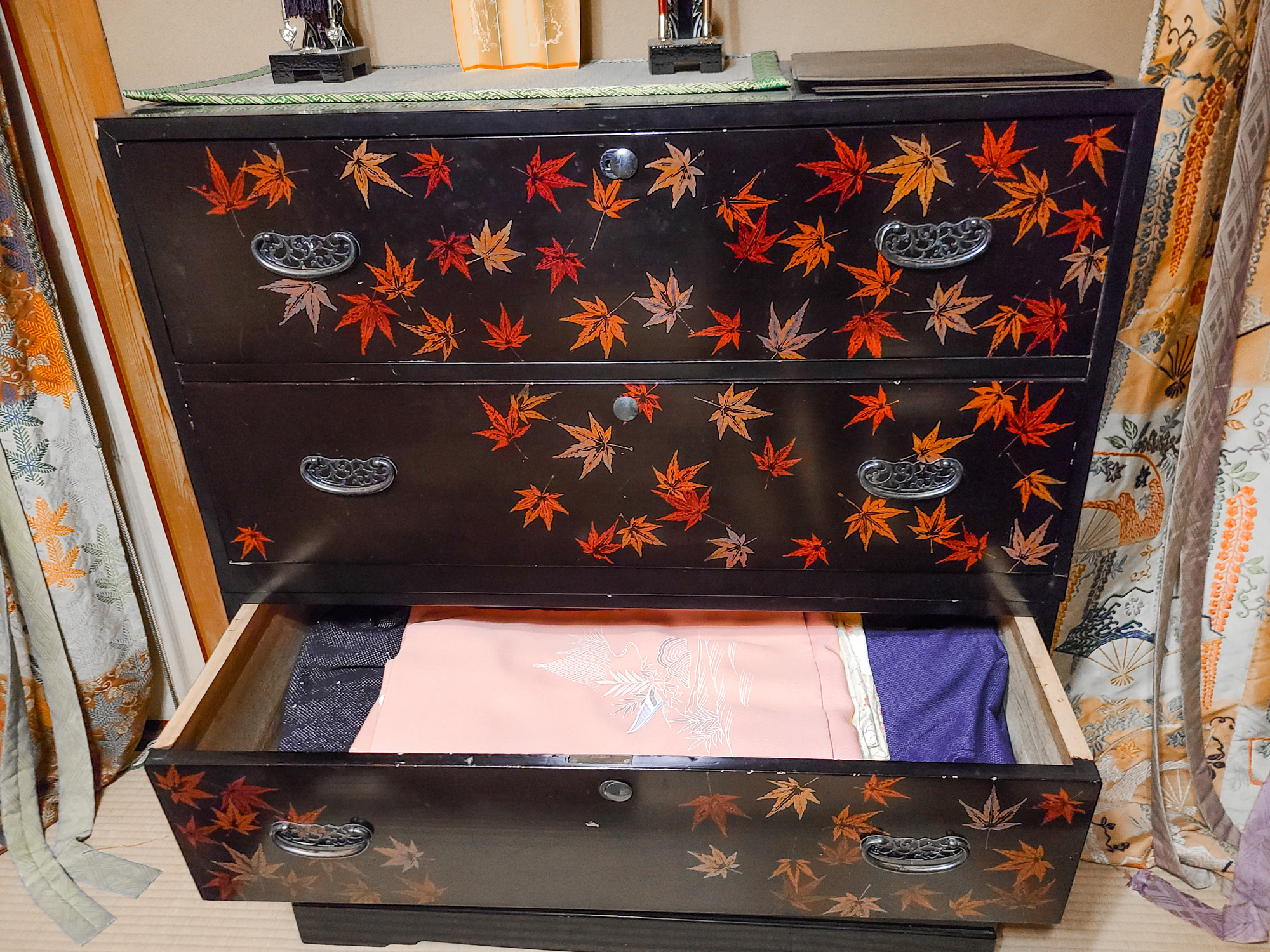
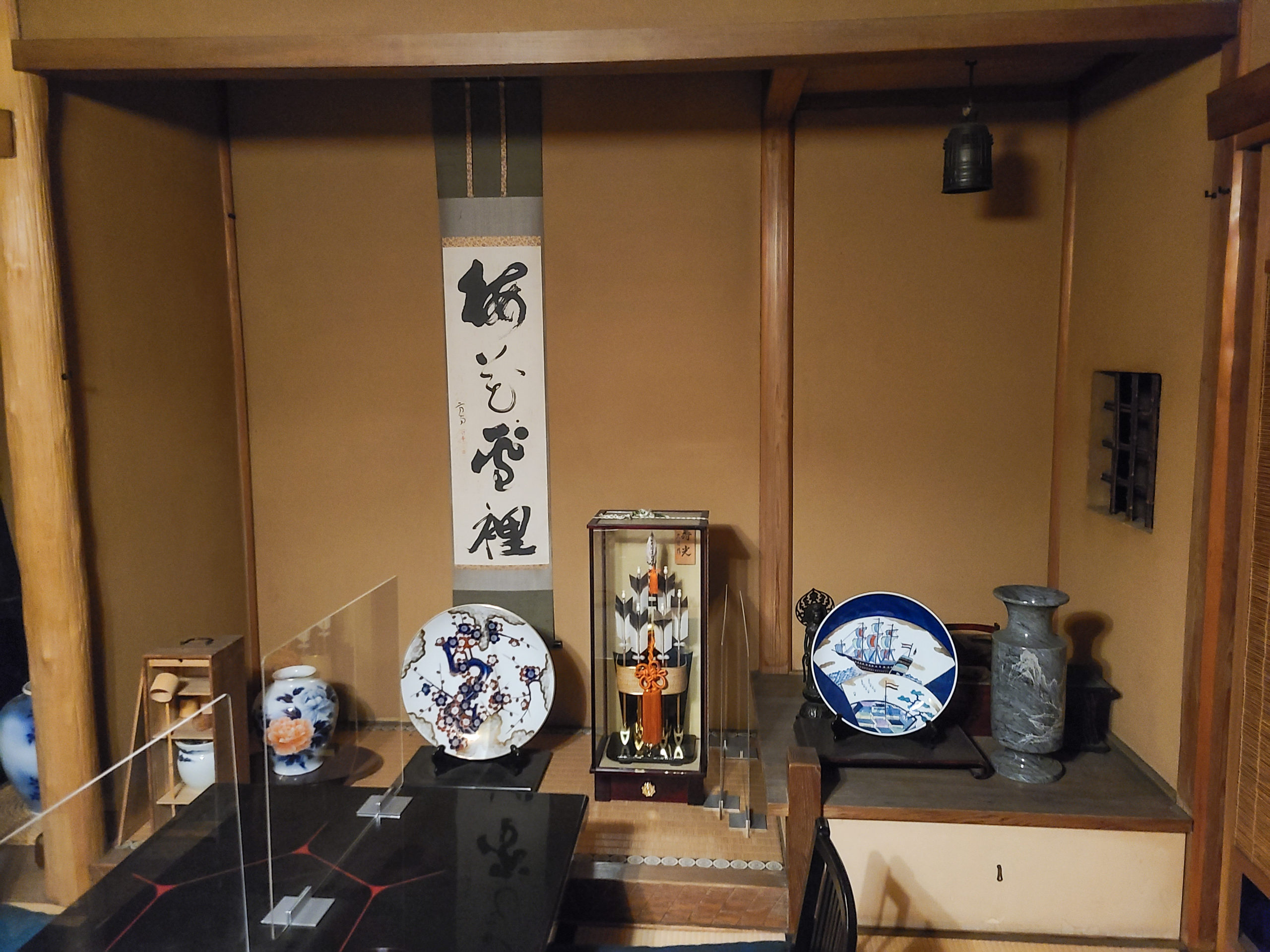
The tokonoma (alcove) with hanging scroll and various antiques
If you’ve never used a kotatsu, I must warn you: once you snuggle up under the blanket and put your feet under the heated table in the cold of winter, it’s hard to leave…sometimes impossible! I speak from experience. What a pleasant way to spend the evening, with family or friends, eating and drinking, playing games around the kotatsu!
Tomura-san mentions that guests are also free to try on the various kimono in the dresser.
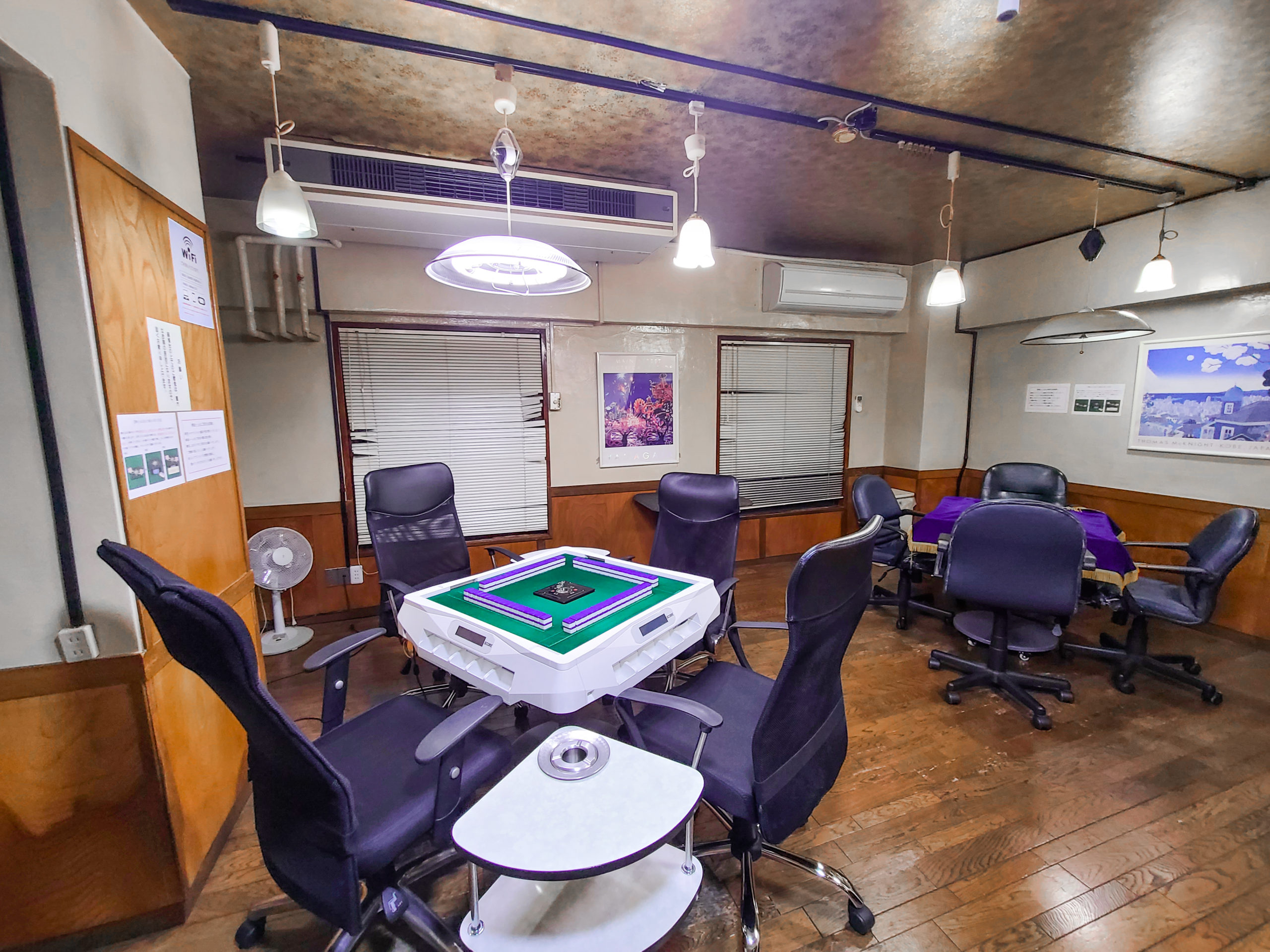
A retro mahjong room suited for hardcore mahjong players
He continues to explain that “The Hideout” is not the only unique room that they have; the hotel also has a room dedicated to mahjong specifically. This room has two mahjong tables, air purifiers, and ample lighting. The room is available for use by reservation, and you are free to bring your own food and drinks.

The patio—unfortunately it was raining this day
There is also a quaint patio that is quite pleasant when the weather is nice.
As we finish up the interview, Tomura-san gives me my room key and wishes me a pleasant stay.
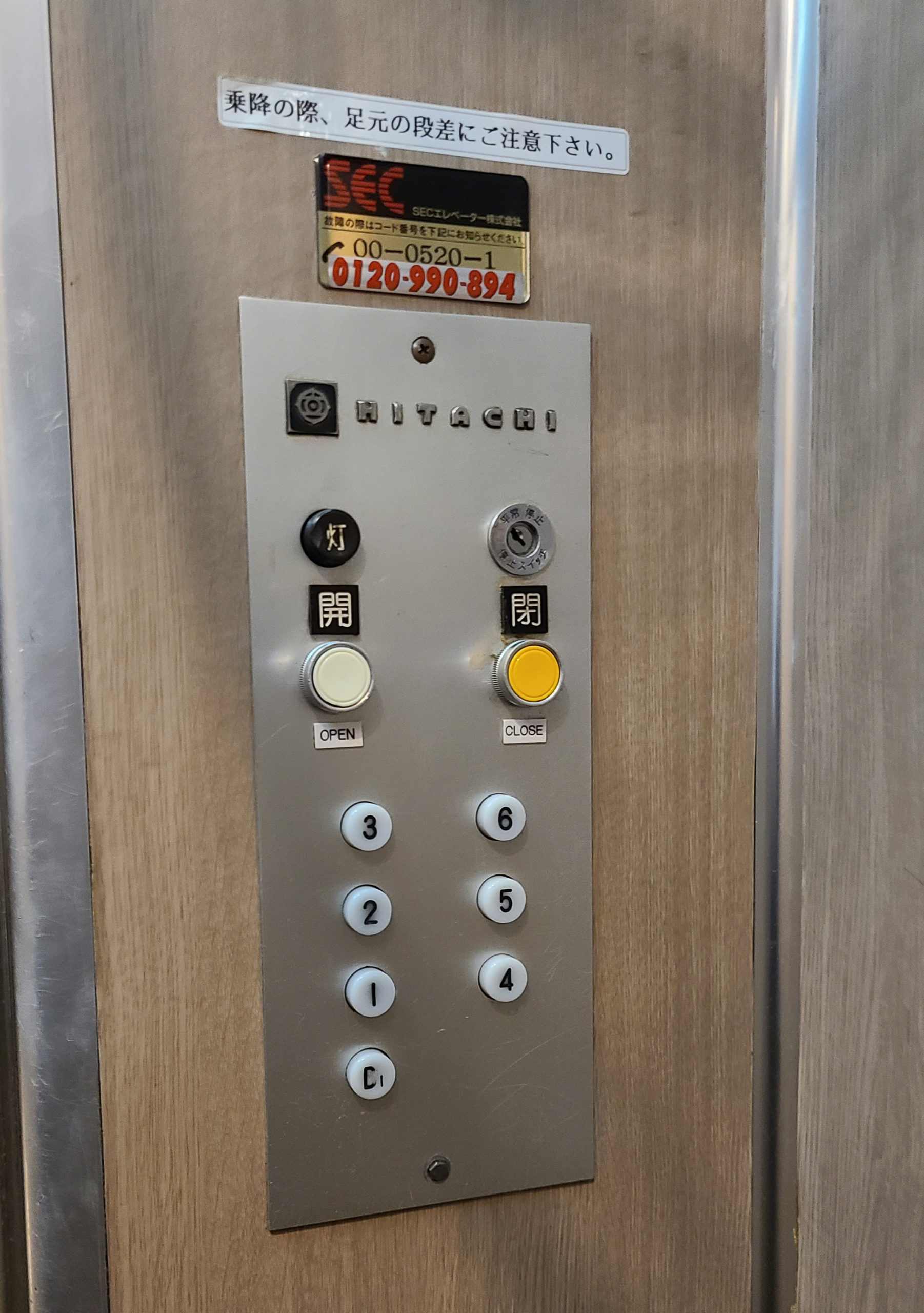
The elevator will its all-original buttons
I board the elevator and take notice of the retro button panel. This hotel seems as if it’s frozen in time, and I’m loving every minute of it.
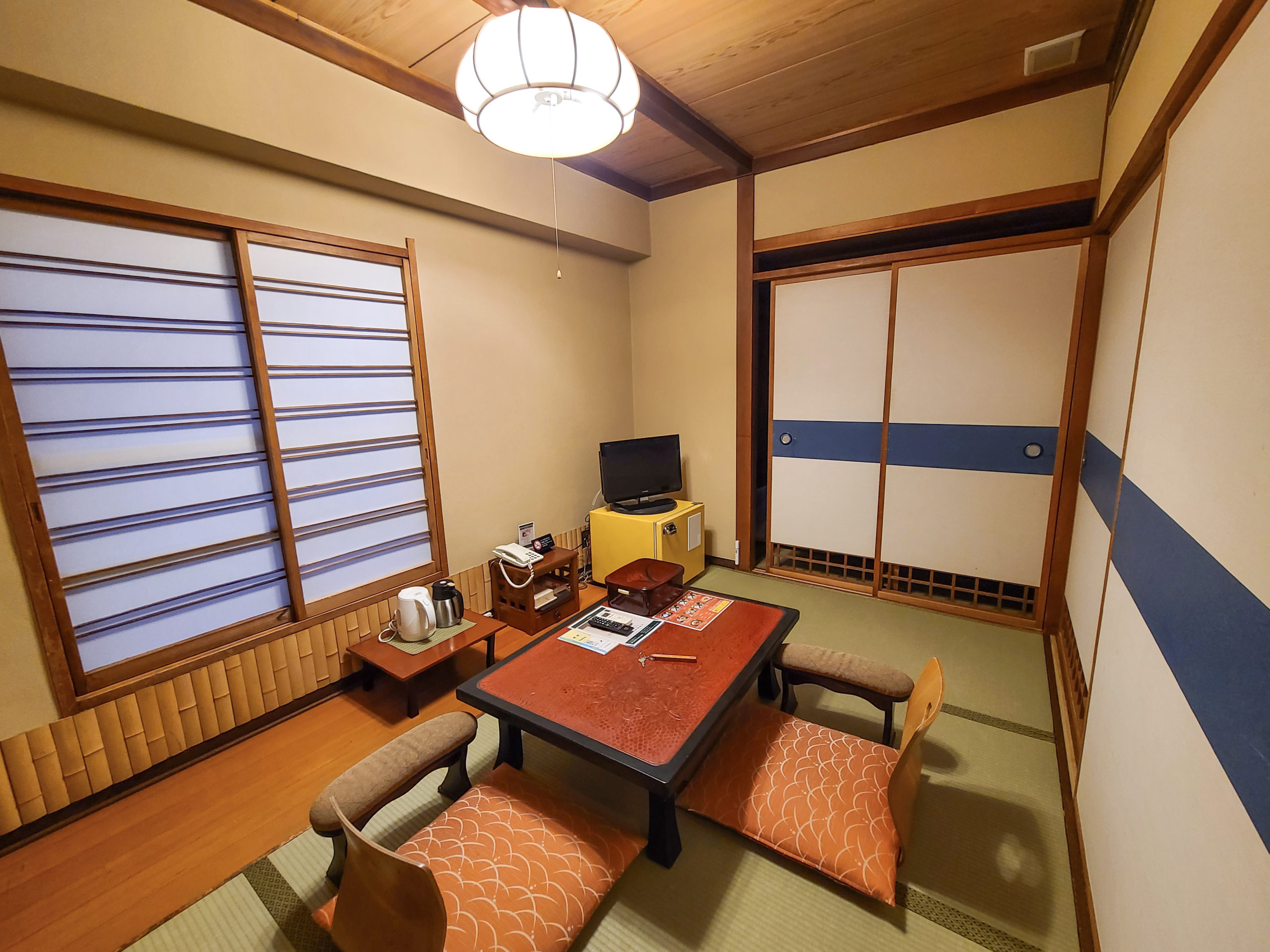
My room, with two sliding panels leading to the sleeping area
My room has two rooms that are separated by traditional sliding panels, very cozy. The sleeping room has two fluffy-looking futons laid out for me.
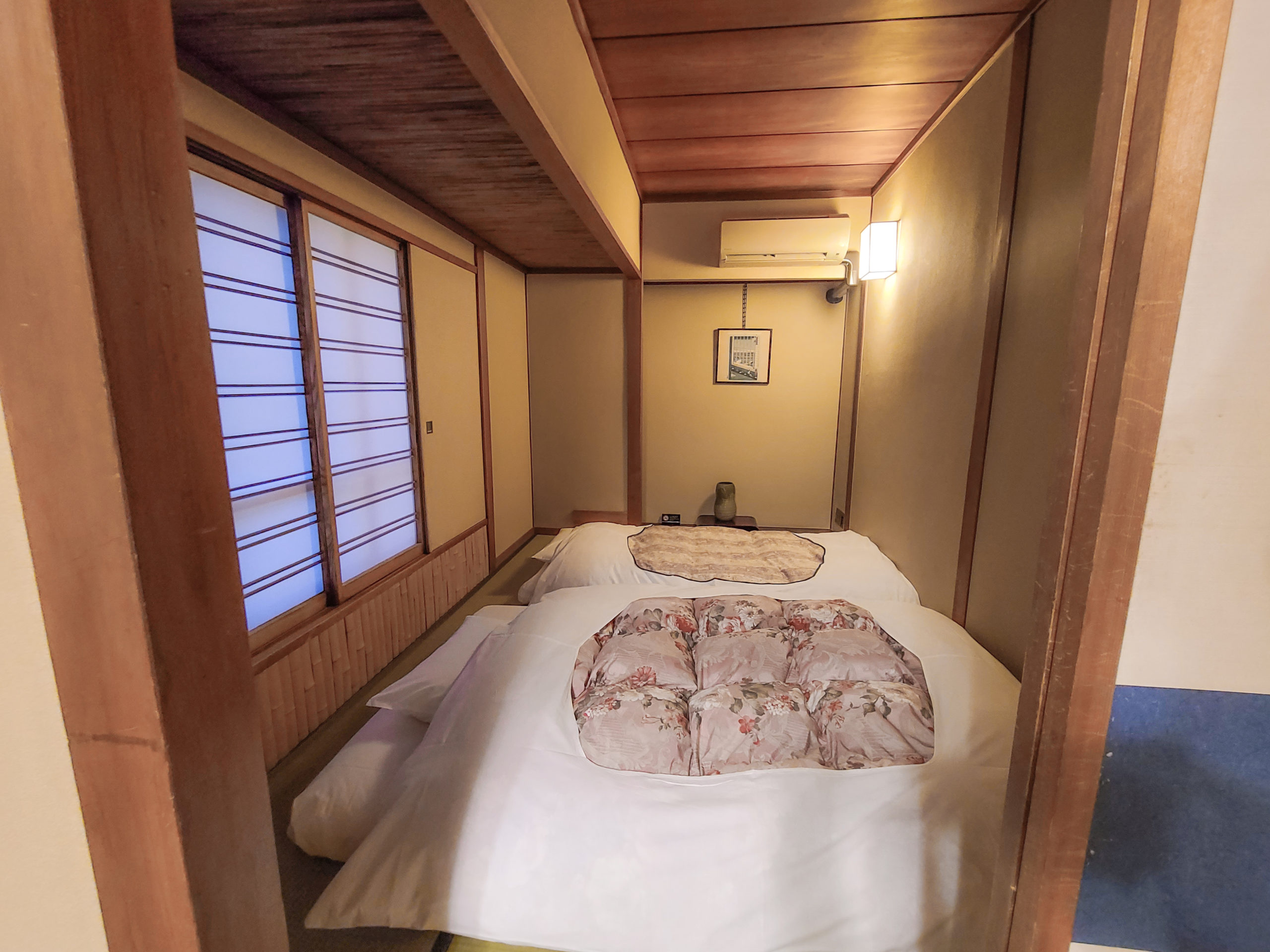
Room service is also available, but today’s stay includes dinner at the downstairs restaurant that serves soba (buckwheat noodles) as its specialty. Now, if you’ve been to a soba restaurant, you probably think that this is nothing special. Let me tell you, that is not the case here.
The full meal includes a variety of dishes, starting with a mushroom-in-gelatin appetizer, miso with crunchy soba kernels, soramame (fava bean) tempura, and even some sushi. Throughout my meal, I can’t help but be amused at the amazing juxtaposition of this traditional Japanese restaurant cuisine with music by QUEEN playing in the background. The amount of food is more than enough to fill me up, and after taking a short break I head over to the hotel’s public bath.
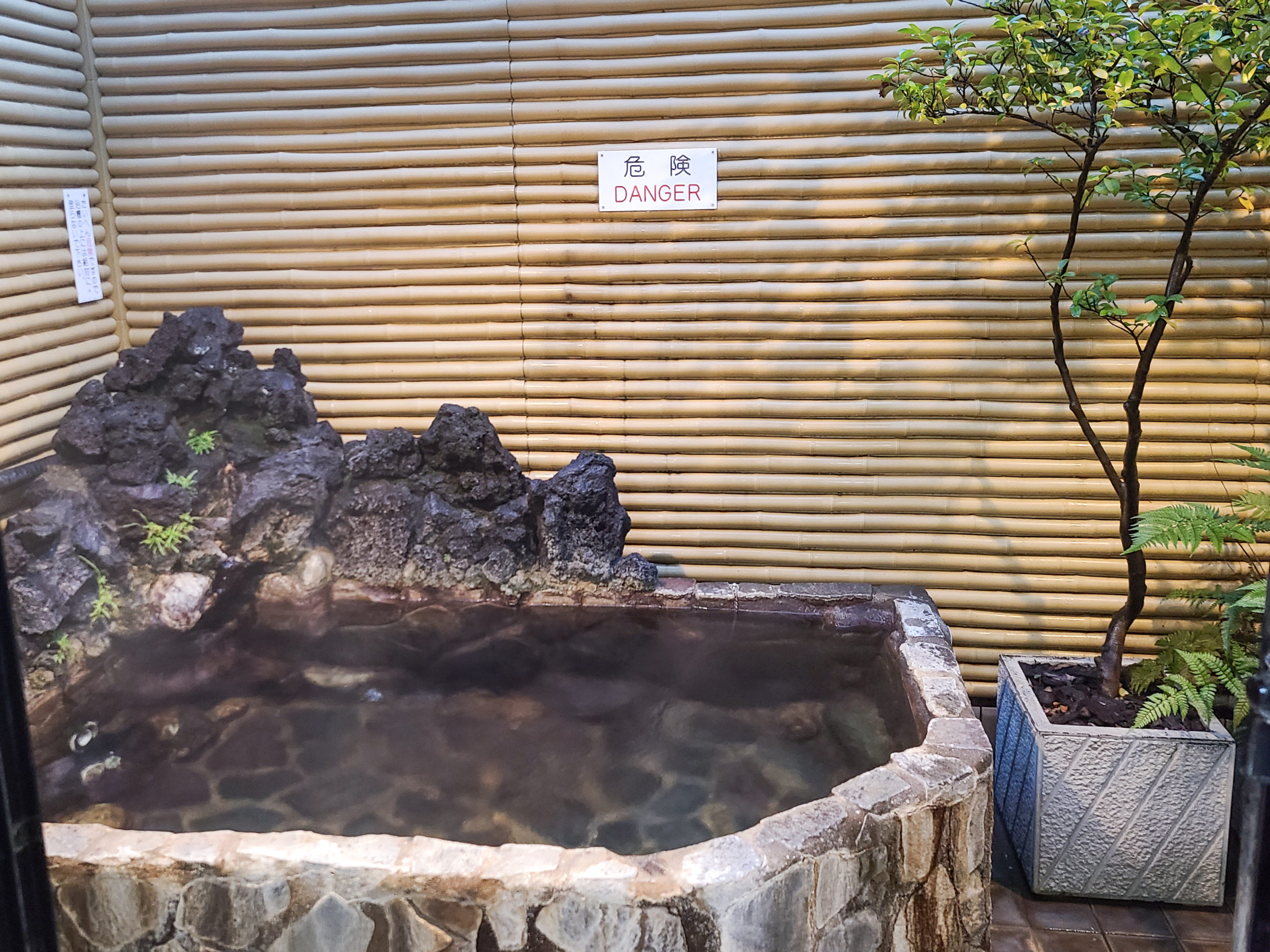
The bath here has both indoor and outdoor tubs. I’ve always preferred outdoor tubs, so even though it’s raining outside I make a straight run to soak in the rotenburo outside after thoroughly washing my body with soap and water in the shower area. I have the whole place to myself, which makes the experience even more relaxing.
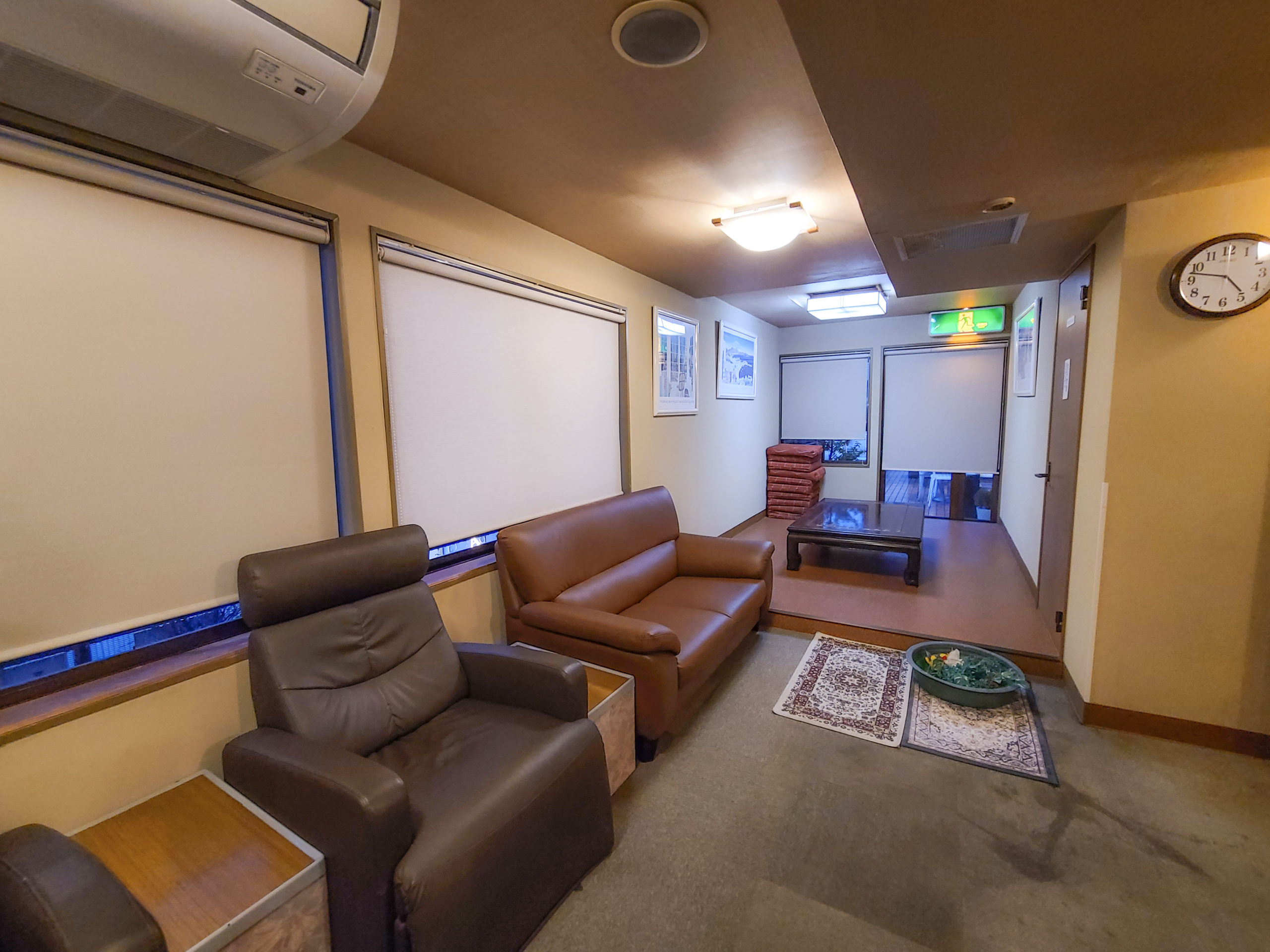
There’s also a small lounge area where you can relax after your bath
There’s also a small lounge area where you can relax after your bath
With my belly full and my body warm from the bath, the fluffy futons in my room are even more enticing, and I have no trouble falling asleep almost instantly.
Hotel Edoya invited me into a dimension of its own, a break from the everyday.
It was just what I needed.
supported by Japan Ryokan and Hotel Association Tokyo Branch
